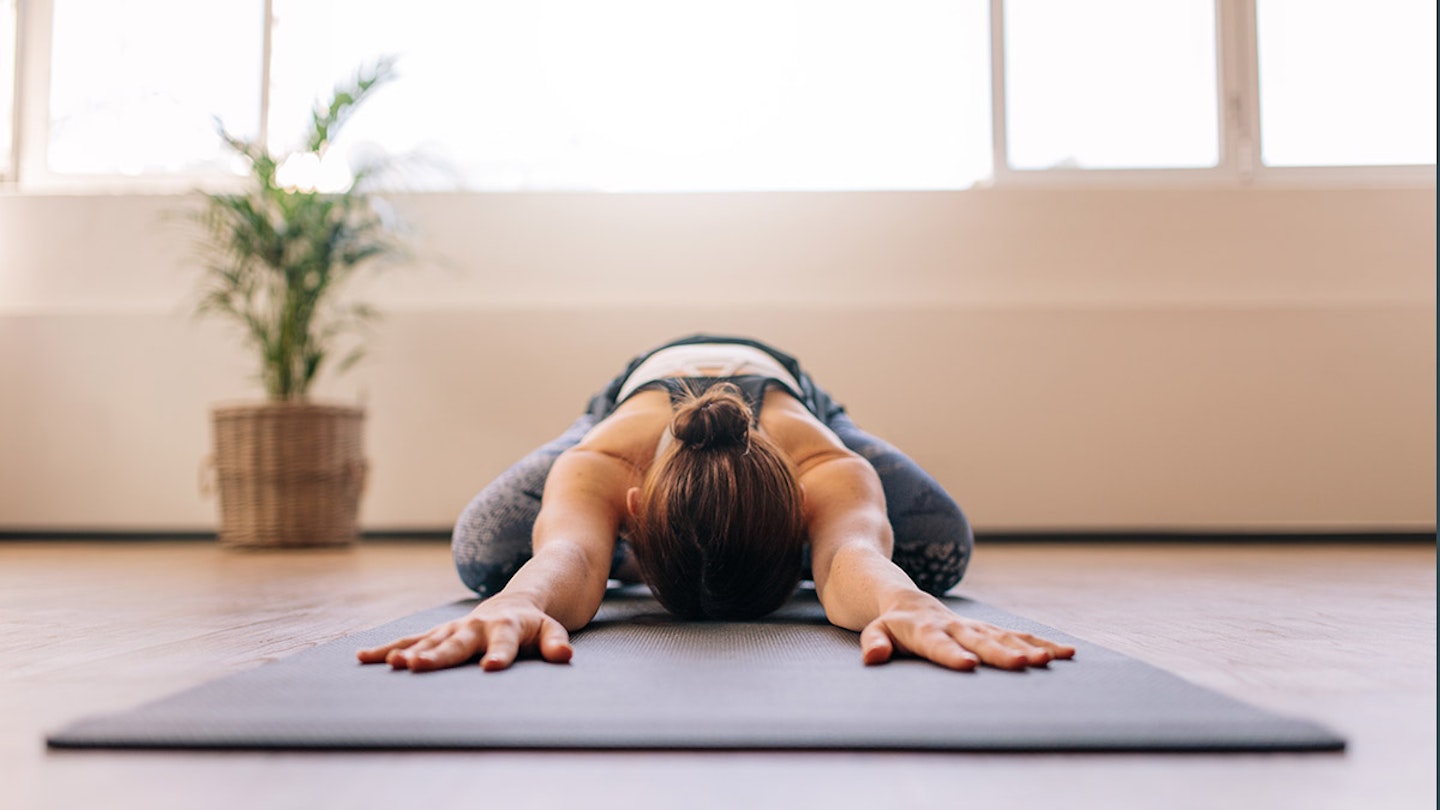We’re all aware of workouts such as yoga that aim to help with our flexibility, but it's also good to incorporate some mobility exercises into each day to improve your overall health and fitness. For many people, mobility goes amiss, but it’s incredibly important as it’s all about the way your joints move inside their sockets.
“Mobility exercises are designed to increase your range of motion,” says Anisha Joshi, an award-winning osteopath, who’s helped many celebrities with their movement, including Sir Trevor Macdonald. “These differ from flexibility exercises as instead of lengthening muscles, mobility exercises are all about controlling the muscles around your joints, allowing your movement to be more supported and active.”
Read on for some mobility exercises to try from the comfort of your home and even chair exercises, as well as everything you need to know about its benefits and how often you should be doing them.
What are the benefits of mobility exercises?
According to Anisha, mobility exercises are just as important as endurance and balance exercises. “Training your mobility not only decreases your chance of injury but also helps to relieve tension across your body. Mobility exercises are an easy way to decrease aches and pains and can be done from the comfort of your own home.”
Turning a blind eye to mobility exercises will increase your risk of injury and simple movements such as bending down can become a struggle. And remember, many mobility exercises like Pilates are also great for weight loss too!
Mobility exercises to try
Here are ten mobility exercises that you can try from the comfort of your home to assist with your most used joints:
Chin nods on wall
Stand with your back and head against a flat wall and slowly lower and raise your head, essentially nodding. This will help your neck mobility and strengthen the muscles there.
Arm flies on wall
Again, stand with your body against a flat wall, but this time have your arms out so that your upper arm is level with your shoulders and your forearms are up at a right angle with your palms facing the room. Slowly straighten your arms above your head, keeping them flat on the wall. This exercise will help with your range of motion and also your shoulder strength.
Straight leg hip twists
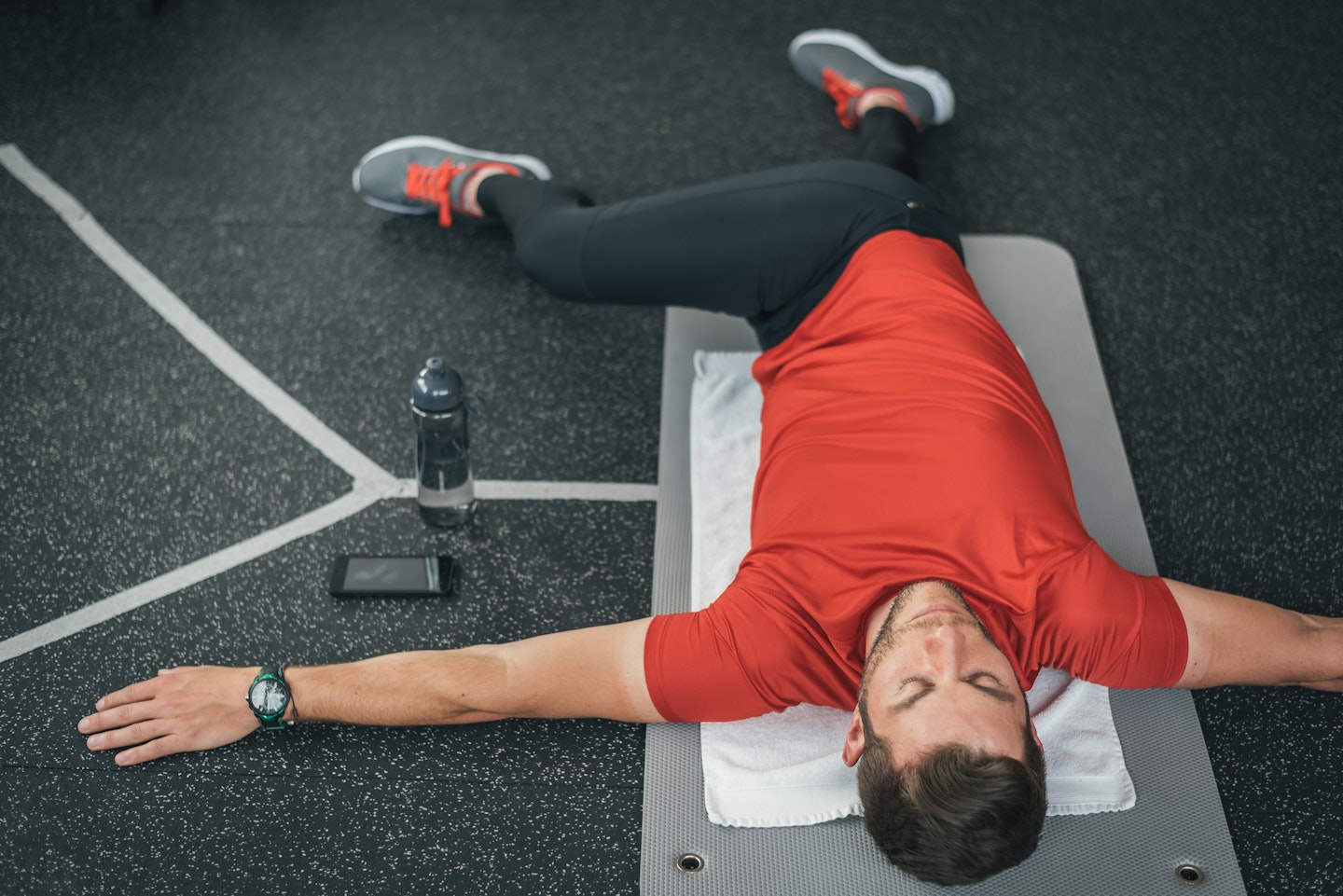
Lie on your back with your arms out to the side and your legs out long. Lift one leg up and across your body, twisting your lower back. This will increase your mobility across the lower back while also strengthening it which helps to prevent injury.
Cat and cow
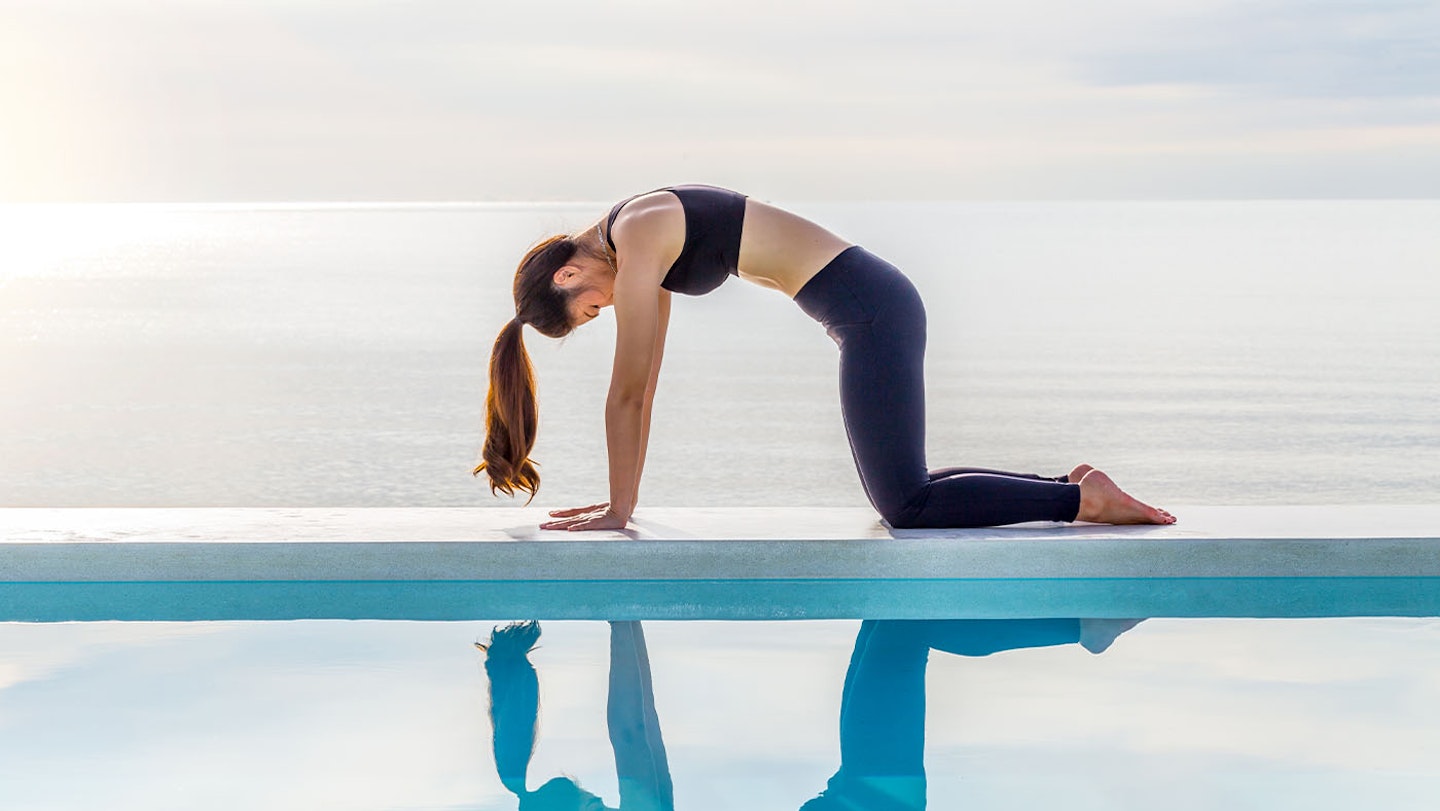
Beginning on your hands and knees, keep your hands shoulder-width apart and your knees below your hips. Breathe in deeply and pull your belly button to your spine, curving your lower back as you do so. This is the cow position - hold it for three seconds. Slowly transition to the cat position by arching your back while looking up at the ceiling. Hold this for a further three seconds before repeating the moves eight times.
One leg reach
While standing on one leg move an object (around hip height) from side to side. You may want to use a foam roller for this exercise. This exercise helps with mobility as you are reaching but also core strength and balance.
Child's pose and stretch to each side
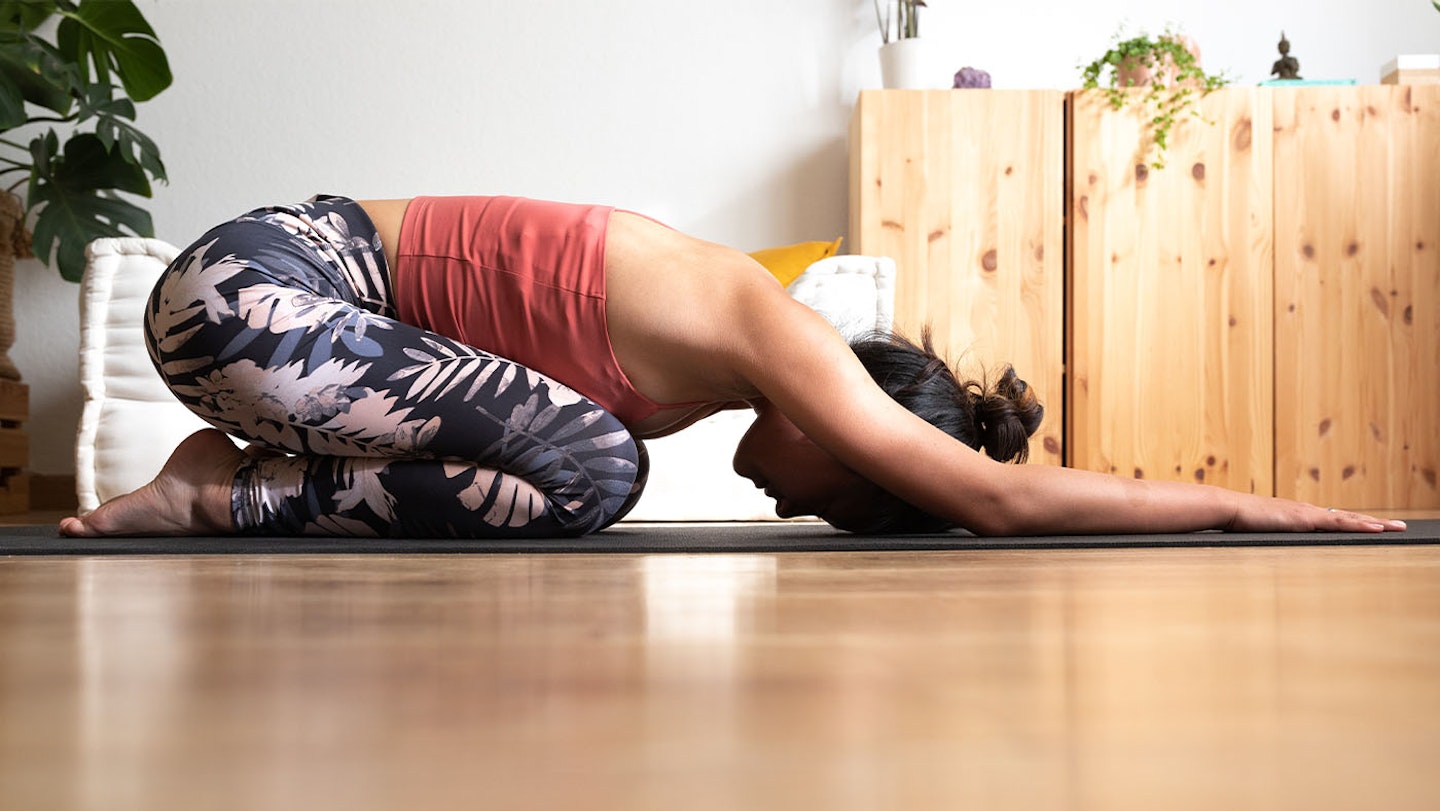
This is pretty self-explanatory. Go down into child pose, then when you reach your arms forward stretch them out to each side together, left then right. You'll feel a stretch down the side of your chest. This exercise is great for relaxing and cooling down after a workout.
Ankle rocks
Using a box or low bench, place one foot on top, keeping your foot flat and gently rocking your knee forward so you can feel a stretch in your ankle. Hold this for a couple of seconds before rocking back to your original position. Repeat 8 times on each side.
Wall sit and squeeze thighs
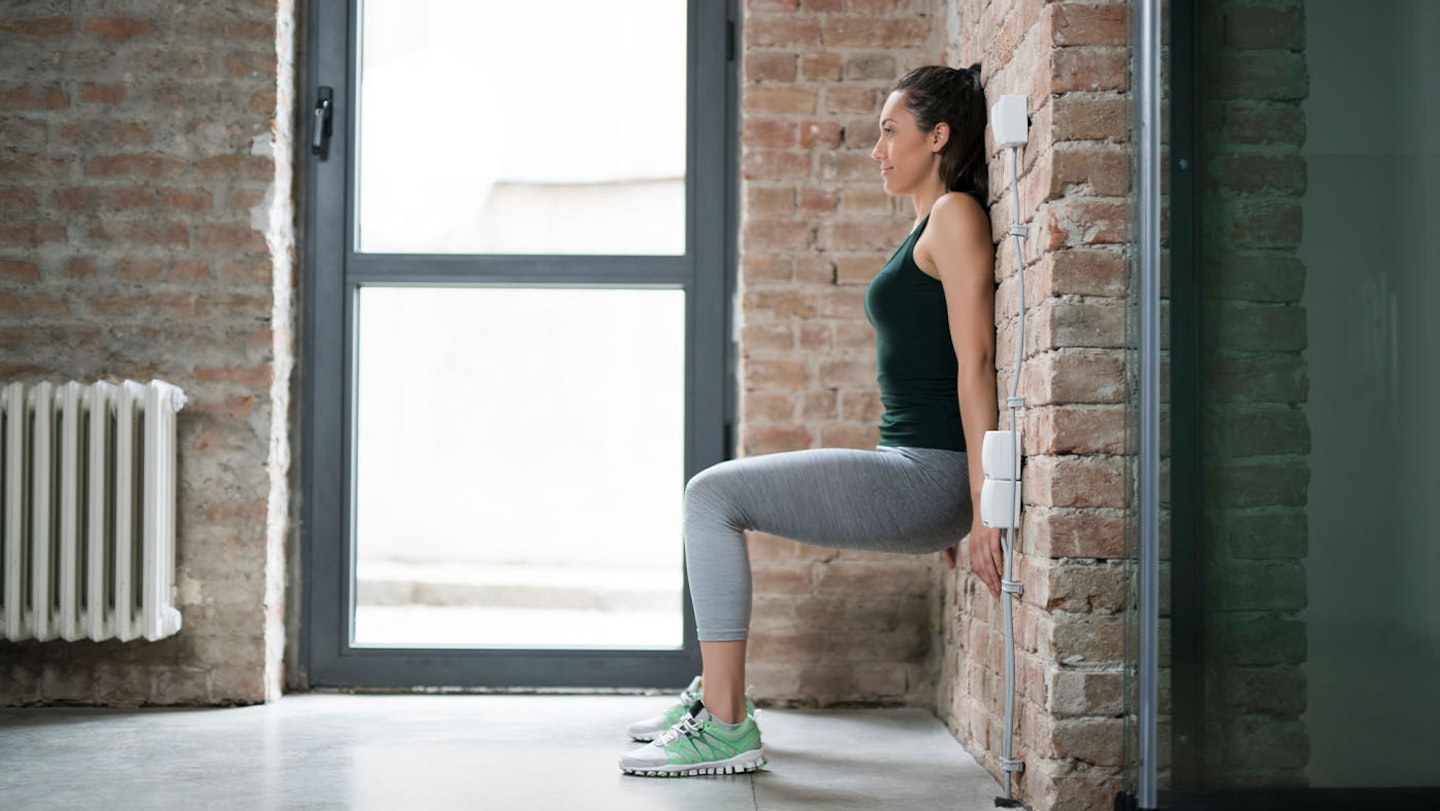
Bend your knees and lean against a wall as if you are sitting on a chair, while doing this place something between your thighs and squeeze. Use the same foam roller from before as it has some give. This exercise works your lower body and is a lot harder than it sounds.
Hip switch
Sitting up straight on the floor with your legs a little wider than hip-width apart, bend both knees at 90 degrees. While keeping your heels on the floor in the same position, rotate your knees from side to side. Do this six times on each side, ensuring to maintain your upright posture.
Deep squat
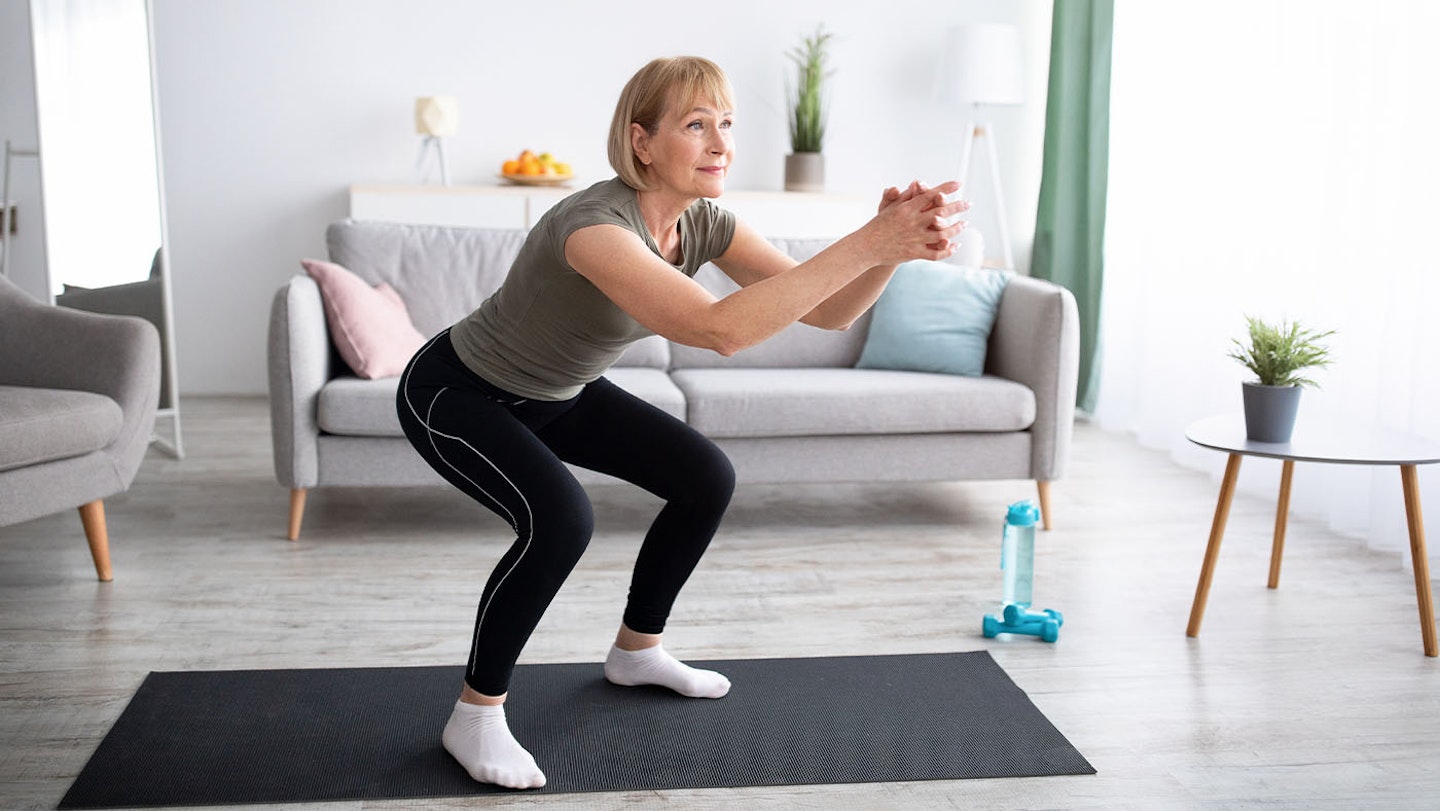
Holding onto a support surface such as a door frame, keep your feet wider than hip-width apart and lower yourself into a deep squat position, ensuring your feet are flat and your torso is upright.
How often should you perform mobility exercises?
This really depends on your goals and how often you train.
“If you regularly train then it is good practice to incorporate mobility exercises into your schedule so that every time you exercise you do some mobility training too.,” says Anisha. “If you do not do regular exercise then the minimum I would suggest is 2-3 times a week as mobility is something you need to do regularly to see lasting results.”
How to track mobility progress
Mobility is not quite as easy to track as other exercises like strength training or cardio, so it's a good idea to introduce some more tracking techniques and monitoring tools.
Keep a workout journal – Not only is journaling good for tracking your own mood and mental health, but fitness journaling can help you track how your body is feeling, what you can and can't do, and what your goals are.
Get a personal trainer – Working out with a professional can help you workout the specific areas you need to target under the watchful eye of an expert who will be able to make sure your form is correct as well as helping to create a personalised mobility exercise plan for you.
Record yourself – These days we've all got cameras on our mobile phones, and recording your workout and watching it back later can really help you track how far you are coming in a visual video log. Over the course of the next few weeks, you may see your mobility increasing in the videos.
About the expert
Anisha qualified as an Osteopath 12 years ago from the highly esteemed British College of Osteopathic Medicine. Since then she has won Principal Osteopath of the Year, appeared on This Morning TV show and has been sought out by many magazines and national papers for her expert commentary. Her patient list includes many professional athletes as well as A list celebrities who seek out her advice and treatment.
To enjoy more regular stories just like this, become a Yours subscriber and become part of our fun and friendly community of like-minded readers.
Bryony has contributed to various Bauer Media brands such as Yours and What’s The Best as a Health and Fitness Product Writer since 2022. Having previously sat on the editorial team for Mother&Baby and Yours as a Digital Writer, she is now pursuing her passion for fitness further at T3.com as an Active Writer.
